
|
| Accept Cookies | Customize | Refuse Cookies |
Banjo911 www.juzaphoto.com/p/Banjo911  |
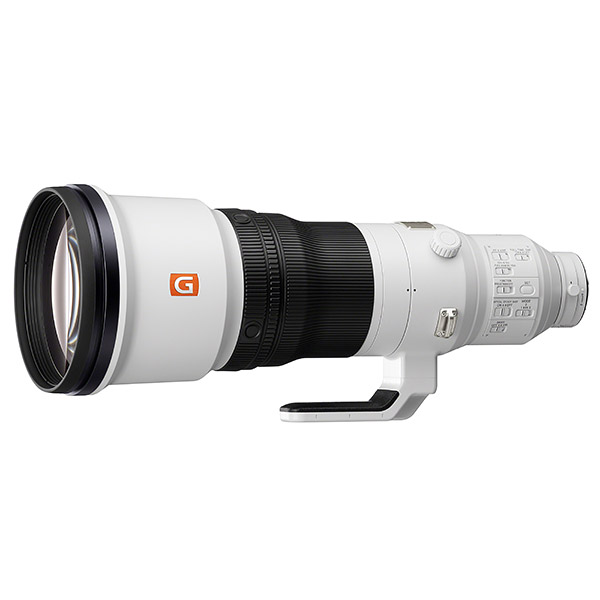 | Sony FE 600mm f/4 GM OSS Pros: Very light structure, finally a 600mm F4 that can be used freehand. Mounted on A1+BG+2 Batterie+2CFA in "heavy" configuration, it detaches the 4.4kg of total weight (impressive how light it is), if you remove the BG and a battery you raise an additional 800gr to the combo, making it even lighter. Superfast, the speed of MAF is something "embarrassing", from the point of view of focus targets and tracking speed, I had several long speeds (Nikon), but this overwhelms them greatly, begins to lose a thread of speed with the TC2X grafted, almost inperceptible. Razor Sharp: I do not think it is necessary to add anything else, as it is sharp and resolving when the TC2.0x. Magnetic alignment hood is also mounted, which facilitates the batting of the same on the base of the canvas (nice find). Confirmation click 90 degrees when rotated on its axis (disengagable), really a nice surprise. The tapered and collected shape, unites it, for weight and features more to a 500mm than actually to a 600 F4. Fantastic I would say. Cons: Cost, even if on Sony, compared to other brands, you can file the price, and get a little discount, repeated at the suggested purchase price, really high. The only downside that I would like to point out is therefore the price. Opinion: Finally, after 7 long months of "agony", Sony Italia I delivered to me, in its beautiful briefcase (identical to the nikon I had previously on the 600 FL F4, will they work together??), and what to say, if love did not click immediately, maybe something more I think. The combo, as mentioned in the sec. Pro, it is really freehand swingable, really a featherweight, leaves the brandability of the lens + camera system, with an ideal weight distribution and that does not tire, this perhaps the real plus, together with the multiplicity that seems "native", and the speed and precision of focus, which leave you stunned, if you are not used to it and first impression. Used on A1 (it will also be thanks to the machine), it has a sudden rate of fire and unattainable today by any canvas on the market, the only way to understand it is to try them together, pure enjoyment. In combination with its TC 1.4x/2.0x it reaches 1200mm that can be used in AF as if they were 850mm, which leaves you speechless. If I had to give a definitive end to this lens, I would only say: high. sent on January 31, 2022 |
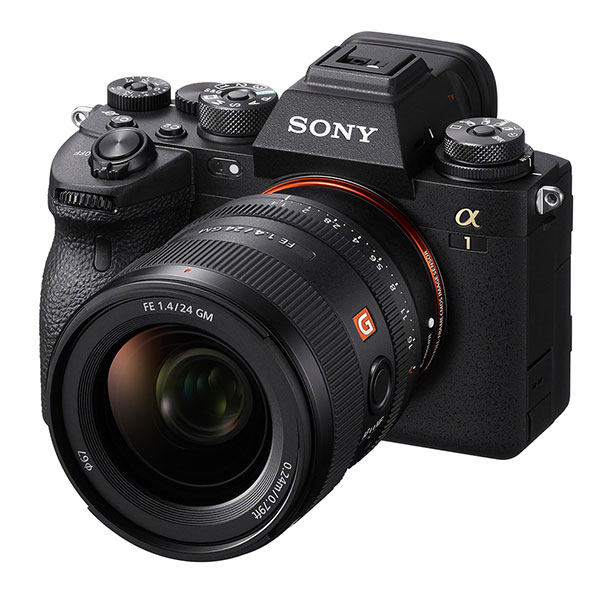 | Sony A1 Pros: Impressive shutter speed (if compared to what is available on the market today), fantastic viewfinder, almost at the reflex level (we are almost at the break-even, finally I would say), comfort of the controls (the control rings are direct, simple, mechanically impeccable and fast in the choices), AF-ON button well sized and preponderant that allows the fast localization of the thumb on the back of the camera. Compactness and constructive accuracy, albeit small, is built like a real flagship (those to which we have been accustomed for years of the former duopoly). Fully programmable and customizable, much more than the competition. Cons: It needs BG with the use of focal lengths from 70-200mm upwards (when, however, the camera is present, it is always compact even with the grip mounted), non-optimal grip and hardness of the tires (the feeling of the SLRs is missing from this point of view), short battery life (you need two to make a whole day especially if you use the evf for the menus and leave it on to appreciate and resume the scene from display), card compartment not made with first-rate material such as that of the entire room. Sony CFA cards too expensive, we are in the order of 200 euros to buy an 80GB one, which the machine drinks in no time (if set to get the 30 fps continuous) and there is no alternative, except to use the SD that are also fast, but not as fast as the CF. Opinion: I have been using the machine for about a month, and the peculiarities of the same are strongly presented every time you use it. Speaking of general operation, I recognize an AF never found (effectiveness and speed) to date on any ML, which is the predominant part of the machine, along with the sequence of shots per second that it is capable, really impressive. File a little noisy, comparable to that of A7r4, which rescaling recovers on ISO, immense crop available (for those who do naturalistic or sports, 50mpx so no really many), use in APS, if you need, pressing only a programmable, hyper-technological key, you feel you have in your hands a small PC (there are those who like it or not, I'm getting used to it). Combined with the variety of sharp lenses and in an immense range of focal lengths, including compatible ones, it is today the most attractive and least expensive flagship on the market. Until today, it has been an interesting experience to use it (for now I own only 100-400mm and 200-600mm, the fixed F4 is coming), it is a machine that must be tamed and set well, it is not the classic tip and shoot, but for the purpose in which it was born, it sees the resolution of every possible and encounterable limit during a sequence of shots, thanks to its total versatility in the field. If you can, it is to have, definitively (you will fall in love with it). It is the first ML, which is strongly associated with the operation of a reflex flagship. (and finally I would say). But having and proving much more. sent on October 21, 2021 |
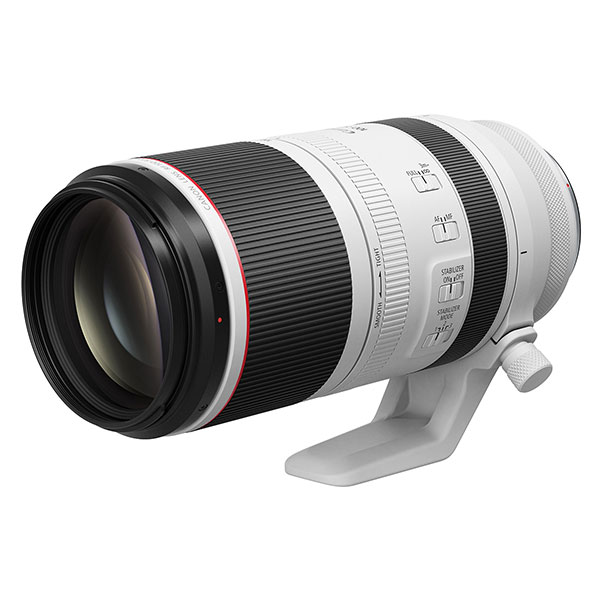 | Canon RF 100-500mm f/4.5-7.1 L IS USM Pros: Very light, versatile, very portable, excellent compendium to an important fixed canvas, in a photonaturalist backpack must not be missing. Crisp to TA at all focals (beautiful thing), well built (it's an L Canon series), removable tripod ring. Windows on the lampshon that facilitates use with polarizers when used in landscaping. IS primacy when paired with an R Canon. Multiplicable at least until the use of the dedicated TC1.4X RF. Cons: Paraluce a little cheap, external extension when in pronounced zoommata, but always well balanced, lack of distance scale on the barrel (now they all do so, it's the new fashion). Very expensive. Opinion: I have had it for a month, I did not use it much, but I immediately fell in love with its versatility, excellent zoom, impressive how sharp it is at full opening even at 500mm, despite the F7.1 diaphragm that sacrifices its use a little (you go up with iso, but you can not expect everything). Lightweight to take anywhere, extreme improves or the already excellent 100-400 ISII, compact and very fast, nano motors, you can not even hear scrolling, it goes to targets in no time and very effectively. Very valid lens to be used even in the video scope (which I do not do). The programmable ring to which I dedicated the sneening of the exhibition is precise and fluid and very comfortable. It's a nice surprise that such a compact zoom, with the limitations of the case, manages to return extreme sharpness in such compactness and multipliability. I reserve the right to modify the review also according to the use to which I will submit it in the near future, affixed to the excellent 500 F4 ISII. sent on May 24, 2021 |
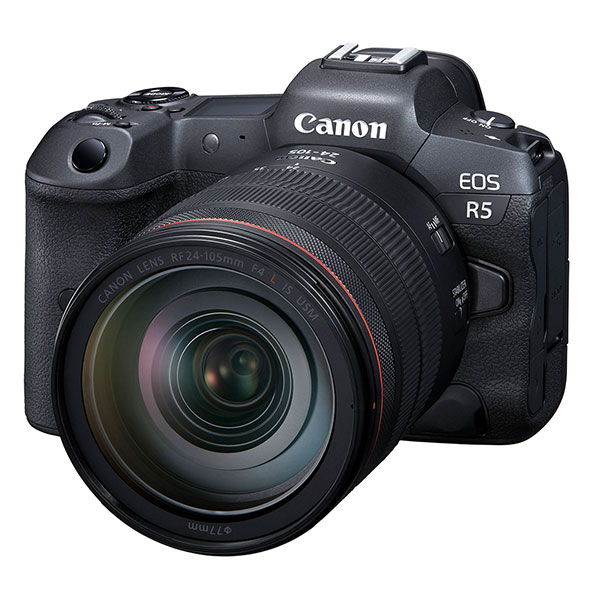 | Canon EOS R5 Pros: Very fast machine at 45mpx, ergonomics and really good key layout, given and considering that I have been coming from 14 years of Nikon (and there we are at our best as ergonomics..), I used it only 2 times and immediately I found myself and did the sets properly. Very comfortable the rear wheel to which I have attributed the times in the shot, Canon makes you feel immediately at home also as a menu, even more intuitive than the Nikon who are already the best, Robusta, does not make you regret the SLRs, a camera that perfectly embodies the photographic philosophy of the shot. Very configurable at key level, robust and well built machine. Use CF E (B) cards, I think they are the best compromise today in storage level for these technological wonders. Cons: Batteries. In about 3 hours of shed and 700 photos taken both in electronic /first curtain /mechanic has consumed a battery, it is energivora, and for a whole day of my kind you need at least 3, the BG is recommended, I do not mount it for practicality and lightness of the machine itself (in the future who knows). Sneeging ring explodes a little recessed and almost difficult to reach (I set it to Iso use). Viewfinder, however it is known sore of all ML, will not soon match a nice pentaprisma, which in many cases is also used for naturalistic observation. Too much information that distracts from the composition, but can also be removed. Boards once used for consistent bursts tend to heat up a lot (inevitable since the machine has to work out a lot of impressed data). Opinion: Camera that brought back in Canon many "crooked packages" that were in other beaches because of the sensors that until yesterday mounted Canon, a wire Under sony. Compared to the shots taken with the D850, this R5, it hardly notices differences, if not a veiling wire conferred by the slight AA filter that the machine has, but to which the Canon lenses, very resolving on average, obsess. The total system change is always an unknown, and although the big shot is still not in my hands (Canon Ita is in distress and not delivery) and that is used with the 100-500 (fantastic and very fast) and the 400 F5.6 EF that I have on trial, the machine has always given its best. The adapted EF lenses "can't be heard", everything goes away linear and clear as if you were using an EF native attack reflex, which in Nikon with FTZ on Z7II (which I had on trial) and FL canvases (600 F4) was not. Crazy AF, in all customizable houses, 20fps, really too many, I don't think they look at 80% of the people who use it, it makes you feel right at home, and you don't regret switching to another Brand at all. Iso usable until 12800, the color is not affected at all, sensor that makes it good to climb iso in the color seal, which is very important when using very tight times on machines with a lot of resolution, and isos, often go to the stars. I reserve the right to make further considerations after intensive use of the same, so as to be as objective as possible in the knowledge of the medium. sent on May 17, 2021 |
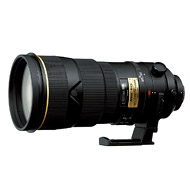 | Nikon AF-S 300mm f/2.8 G ED VR Pros: Well balanced weight nonostane the bulk, of 2900 Grams, extreme speed when used on FF but also on aps, well multiplied with excellent results up to the Tc-1.7x, but does not disfigure even with the 2x, impeccable construction like all professional Nikons, tank. Cons: It does not seem as sharp as the VRII successor, a little less, but always excellent, small pulse in size and difficult to manage with gloves and moffole in winter, weight perhaps a little too high, given also the canon peer who weighs 500 Gr less. Opinion: I owned it for 10 years, bought it to make naturalistic on aps (D300, D500), and realized that the focal point was small, I flanked it with a 600 F4. It remains the fastest in my family's way of seeing, it impresses how little it takes to reach the subject with fire, the change of plans on the fire is at lightning, incredible and the speed it reaches on the professional, even multiplied 2x. It remains a lens to have, below, to multiply, if you are in possession of long important (500/600 F4), to do a little bit of everything, talk about naturalistca, in sport it is a must have together with the 400 F2.8 of all versions. A lens that once tried is addictive and that makes you forget the weight and price (especially if Nital). Recommended in any version, it is a lens that represents the excellence of the Nikon lineup over time. sent on March 30, 2021 |
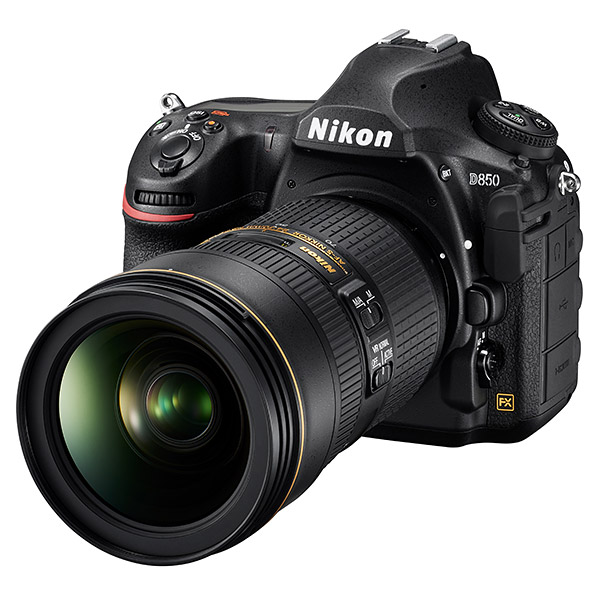 | Nikon D850 Pros: Excellent ergonomics in use with any type of lens, especially long ones, where a decent grip is mandatory and due. Maximum expression reflex of these years, I do not think you have to ask for anything else, it has just everything that it takes to take photographs. What Interests me. Excellent balance of white, improved a lot compared to the old pixels of the Nikon house, and finally orientable screen, which given the landscape vocation of the medium was required loudly, although in my opinion, it lightens a little the room structure making it a somewhat fragile point. In-room Focus Stacking, really interesting feature for landscape and macro, does everything on its own and you can set up to 200 consecutive and interspersed shots of how many seconds you prefer, as long as you use compatible AF-S or motorized lenses. Goodbye then macro slide for macro photographers. Well-cushioned shot of the pentamirror finally after two veraion of pixelated rooms, this does not give some sort of problems, really something welcome and strongly wanted on this type of cameras. Cons: I can say that its Battery Grip and dedicated battery, if you want to reach 9fps, cost a lot, if we also add the original charger for the EN-EL4B/C, you really have to wonder if it's worth it. It certainly applies to those who have important and expensive kits of mirror lenses, and for those people who think they will stay with reflex for a long time to come. I myself love pentaprism vision and abhor the ML screen vision, which is unnatural and still contrived. It forces you to purchase XQD cards if you need a consistent burst, a sore note given the cost of them and the lack of availability on the market. With the new firmware, however, the use of cfexpress is available, which should be released at the end of 2019/early 2020, since it is also thought that the new ML machine bodies will be updated with this standard. Yield high iso slightly lower than the old D810. Many mpx on a CMOS are made to feel, although BSI, technology now at the pole and not easily improved in the future given the total exploitation of potential of this type of sensor. I shoot much louder than the old D810, also in Quiet function, a feature to be taken into account when buying. Opinion: The use for a year now, combined with the D500 which has more accentuated/effective bursts and AF, which I use for BIF, is a machine that returns files really rich in detail, especially if used at low iso, for landscape and study. I bought it for semistatic birdlife, and I would say that even in that area it behaves very well, it has many mpx, but it is also quite fast, something in which the D810 I had before was lacking. Setting AF and layout identical to D5/D500, when I switch from aps to this, and when I use telephoto lenses, I find myself perfectly in the feeling of use, having at hand all the settings that are totally customizable as on the flagship, except a little bit, which of course the D5 has in addition. After having almost all the DX nikons and many FX (not flagships, however), I would like to say that it is the best machine I have had in my possession since I started with photography. In fact, it has condensed all the peculiarities of specialized rooms such as landscaping/sports allowing an allround use really with extreme satisfaction, I think one of the last reflex (it will pass in full to ML in the next decade-I think) built with the sacred crims. If you are in Nikon, it is worth honoring to photograph with such a medium that it returns satisfaction whenever you make a photo output with the intention of expressing something with photography. It is certainly not a sollazzo machine given the grandeur and the quality of construction/heaviness. If you like well-built, solid objects that are made to last and do few things, and well, buy it. You won't be disappointed. sent on July 10, 2019 |
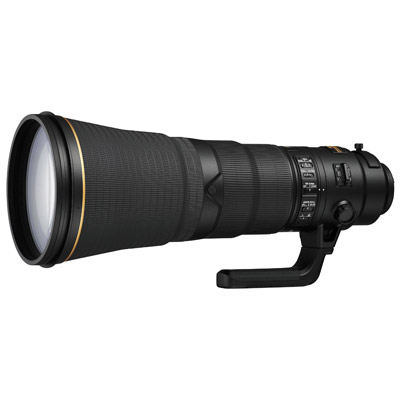 | Nikon AF-S 600mm f/4 E FL ED VR Pros: Lighter than previous models, much better brandion and transportability (weight) if you travel to make only photography and need less weight at airport check-ins. Attack for Sled Arca, at a point more favorable to the pitching of the telephoto on the transport handle (finally) in normal use on gimbal, focus on D500/D850 even more lightning fast, even with the use of focal multipliers series III (posseggo TC1.4III). Major resolution, to date, at the highest levels, you realize when cropping files on aps and with multiplied lens. Cons: The suitcase with which it is sold, is no longer the yellow case padded with velvet, which was for the previous versions (beautiful and very solid), but a briefcase now common to all Brand majors. The price, you can't help but mention as a sore note, but so much so, it costs like a medium-city utility, but it gives great emotions when used in its fields of choice. Opinion: Just taken, and immediately compared to the ED II model I owned until two weeks ago, it looks like a lens of a different kind and use than the old one. It is in fact lighter and collected, with the weight well distributed in the part where you hold the canvas to support it. Lighter, it weighs 3.8kg, still quite heavy (480gr), but better than the old one that was broken down into two parts and uncomfortable to fall back on itself for transport, button, a little bit of a feature (selection keys a little small), but in line with the other average Nikon realizations, very comfortable the key of the Memory Recall, which I already have on the 300mm F2.8 VR, and which I'm learning to use to set the prefocus on the perches, very comfortable even in sports, I think. Light forward due to the two fluorite elements added only on this latest version, totally changes the brandiness, but that in my view, remains very small, because of the weight that these lenses have, I think that under 2.5kg of weight, you can establish to use such a lens freehand just for a while, with these important weights it is really difficult. I propose to give further new impressions after the intense use which I propose to submit it and give more news about the use on the field, compared to the previous version i owned. sent on June 14, 2019 |
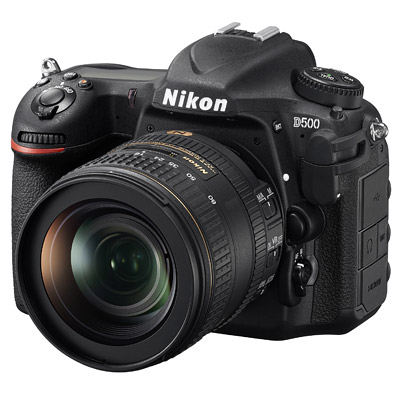 | Nikon D500 Pros: Well finished body, good grip and size when assembled to its BG, good ergonomics and functionality, professional layout that creates addiction, difficult to forget when you hold on to other, even if the same brand. Configurable and illuminated keys, Plus not indifferent. Cons: Tilting rear screen, advantageous, but not very supportive with the monolithic rest of the Body, a bit small and narrow opening mechanism. Slight lag when the menu of the machine is activated, the hourglass appears for about 1/2 seconds, sometimes it is annoying to have to wait. Battery life a little low, when used in LV or in "Non-airplane" mode consumes a lot. Opinion: I have been using the machine for well a year and a half, coupled with my "long" (600mm F4/300mm f2.8) for birdlife, and to this day, I have not found any better, than so fast, outside of the admirals that have well other costs. of pro has the keys Layout, totally configurable, in total 4, to which you can make what is best believed, from Iso settings, to AF functions that are many and improved, sharing the same AF module of the elder sister D5. The autofocus module, in addition to other peculiarities of this reflex is something really innovative, very reactive already with F4 lenses, gives the best of itself with the most open, focusing in an extraordinarily fast. In hooking subjects is really fantastic, not late to acquire even if the brightness of the scene is small, given the AF module equipped with a-4ev reading, perceptible very easy to use. Another point in favor is the burst, at 10 fps for 200 shots continuously, I do not think I've ever used it, and when paired with a quality XQD card (Lexar or Sony), is able to give the maximum of its strength. is tireless in focusing and ensuring the take home the shot, was born for this. A little sore note, the sensor, holds well up to 1600 ISO in good light, after the noise begins to be present, although well manageable via noise software, I think, however, more a reflex devoted to the action with good light, and in these cases, can be better also to Some flagship FX. It needs equipment of solving lenses, as it has very dense sensor, the ideal is the use on pushed Tele F 2.8, where the multiplication factor 1.5 x comes to the aid, and acts as a TC. I use it as a TC for my tele, in fact, after checking I found that, the yield of lenses with APS-C, is better than those FF with applied TC. In Summary, the machine costs, but deserves, because you pay, for the feedback it gives. To date, on APS format, in the Reflex field, it has no equal. Difficult to repeat the output of a machine like this (reflex), in this format. To try, but especially from "have" if you are naturalists/sports photographers. sent on January 01, 2019 |
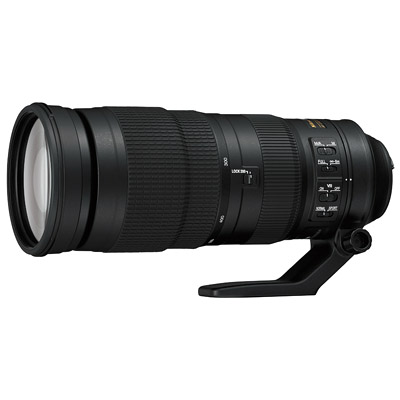 | Nikon AF-S Nikkor 200-500mm f/5.6 E ED VR Pros: Light, compared to a fixed quality, well-handled freehand, less on stand (varying the focal length if mounted on gimbal need a long plate to adjust the weight balance), very effective VR (5 Stop), quick excursion of Focal soft, easily removable support ring. Cons: Construction quite "Cheap", but given the price, you could not ask for better, lens hood can be improved and impractical (hooking), sometimes if you do not pay attention, in the handling risk of parading, short support plate, needs in fact for use by stand A long plate (Arca Swiss), which distributes the weight during the Zoom excursion. Opinion: I've been using it for about 10 months, and although I'm not fond of wandering photographic hunting, I use it as a shed, it has been able to give me, especially on D810 and D500, good impressions and good images. Already sharp from f 5.6 (base diaphragm) reaches the maximum between F 7.1/F8, diaphragms that have been used, in my view, this type of Zoom, then with good light, which also facilitates the speed of engagement, a bit ' deficit with machines already of them, not very fast. The stabilizer is very welcome for "free-hand" shots and closed diaphragms, it actually helps to stabilize effectively up to 5 stops. Not bad I would say. Và purchased with the knowledge of the cause, what you will use, in a kit with a fixed important, maybe long (500/600mm F4) is a good compendium, if you do not have a 70-200 to multiply if necessary, not disfigure certainly in comparison. Its forte is the versatility, on that one, it has no equal. With the TC 1.4 III, I never used it, it would be necessary to shoot at least F11, which I have always avoided, cause the diffraction to occur. Ultimately a good Zoom that winks at the wallet. Highly recommended. sent on January 01, 2019 |
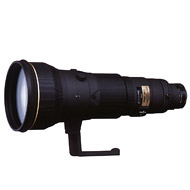 | Nikon AF-S 600mm f/4 D ED II Pros: Ultranitido when used smooth, with the 1.4x must be closed at least F6.3 to have a dignified yield, very stable when used on solid tripod and gimbal, fast and silent motor, hood (it has 2) modular, in case you need more short, or the big one does not pass from the loopholes of the huts, it can be kept on the one with a smaller diameter. Cons: It is not suitable with the latest Nikon Teleconverter, as incompatible, heavy, not usable freehand, foot supplied a little else, but you can very well replace with a low profile, minimum focusing distance in manual 5, 4mt and in 5.6mt AF, sometimes limiting when used by neighbors, extension tubes must be used. To carry it you need a separate backpack, because bring the yellow box Nikon that is in kit (well built) is not really easy. Opinion: I've been using it for 5 years on the D300 / D700 / D500 / D810 and it gives emotions even when handling it, built in an excellent, heavy and magnesium way, the engine is ultra-fast and does not feel the weight of the years, (my exemplar has 10 but it is still - Mint Condition). It is not very well balanced, so it should be used on a solid tripod and leveled well, freehand even to think about, it is not really suitable and then the camera + Lens combo comes to weigh almost 6kg. With the D500 has a lightning-fast AF and I can also follow the actions in flight well, the machine performs micrometric adjustments at each shift, aligning the MAF with the point of fire in an unexceptionable manner. Good, but simple and slightly exceeded the limiters for the distances but they have large frets and is easier then use them in winter when wearing gloves or mittens. The new ones on new lenses are really small in my view. The lens has made less digital than the last releases (and also compared to the 300 F2.8 VR that I have and with which I have benchmarks) but reit solves the lines well and then in PP obviously it also adjusts the contrast that is lacking at the base, however the yield is conceived in this sense, it is useless to ask him different behavior. Recommended if you want to spend the right (in 2018) for a canvas of this caliber, not afraid of older brothers (VR / FL VR) if used smooth, gives superb images and those testifying the page related to queso glass of Juza I am proof of this. sent on April 01, 2018 |
 JuzaPhoto contains affiliate links from Amazon and Ebay and JuzaPhoto earn a commission in case of purchase through affiliate links.
JuzaPhoto contains affiliate links from Amazon and Ebay and JuzaPhoto earn a commission in case of purchase through affiliate links.May Beauty Be Everywhere Around Me